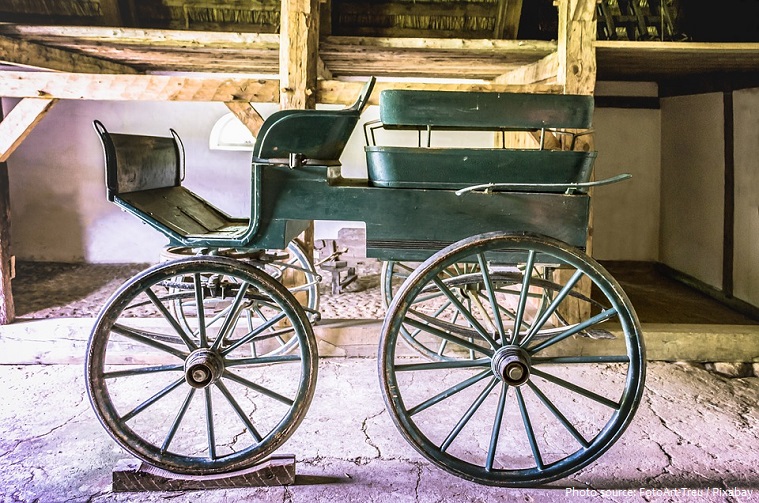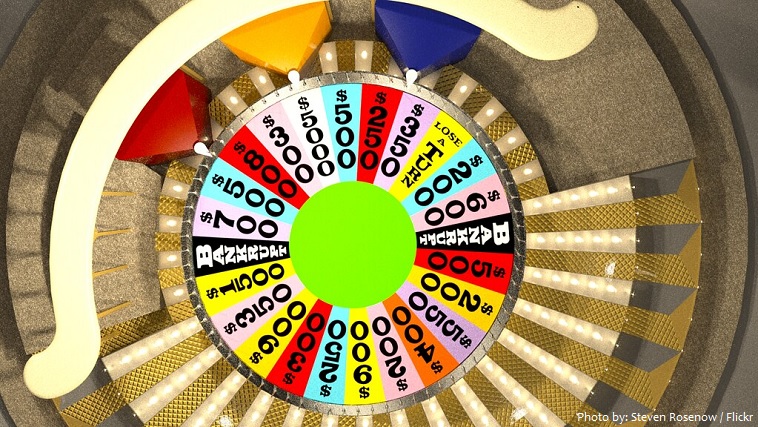
A wheel a circular object that revolves on an axle and is fixed below a vehicle or other object to enable it to move easily over the ground.
It has changed the world in incredible ways. The biggest thing that the wheel has done for us is given us much easier and faster transportation.
The oldest wheel found in archeological excavations was discovered in what was Mesopotamia and is believed to be over 5,500 years old. It was not used for transportation, though, but rather as a potter’s wheel.
The combination of the wheel and axle made possible early forms of transportation, which became more sophisticated over time with the development of other technologies.

Though often thought of as one of the earliest inventions, the wheel actually arrived after the invention of agriculture, boats, woven cloth, and pottery. It was invented sometime around 3,500 BC.
Some of the earliest wheels were made from horizontal slices of tree trunks. Because of the uneven structure of wood, a wheel made from a horizontal slice of a tree trunk will tend to be inferior to one made from rounded pieces of longitudinal boards.
Spoked wheels appeared about 2000 BC, when they were in use on chariots in Asia Minor. A spoke is one of some number of rods radiating from the center of a wheel (the hub where the axle connects), connecting the hub with the round traction surface.

In Britain, a large wooden wheel, measuring about 1 m (3.3 ft) in diameter, was uncovered at the Must Farm site in East Anglia in 2016. The specimen, dating from 1,100 to 800 BC, represents the most complete and earliest of its type found in Britain. The wheel’s hub is also present. A horse’s spine found nearby suggests the wheel may have been part of a horse-drawn cart.
Researchers believe that the wheelbarrow first appeared in classical Greece, sometime between the 6th and 4th centuries BC, then sprung up in China four centuries later and ended up in medieval Europe, perhaps by
way of Byzantium or the Islamic world. Although wheelbarrows were expensive to purchase, they could pay for themselves in just 3 or 4 days in terms of labor savings.
The Wheel of Fortune, or Rota Fortunae, is much older than Pat Sajak. In fact, the wheel, which the goddess Fortuna spins to determine the fate of those she looks upon, is an ancient concept of either Greek or Roman origin, depending on which academic you talk to. Roman scholar Cicero and the Greek poet Pindar both reference the Wheel of Fortune.

The spoked wheel was in continued use without major modification until the 1870s, when wire-spoked wheels and pneumatic tires were invented.
A Ferris wheel (or a big wheel in the United Kingdom) is an amusement ride consisting of a rotating upright wheel with multiple passenger-carrying components (commonly referred to as passenger cars, cabins, tubs, capsules, gondolas, or pods) attached to the rim in such a way that as the wheel turns, they are kept upright, usually by gravity. The original Ferris Wheel was designed and constructed by George Washington Gale Ferris Jr. as a landmark for the 1893 World’s Columbian Exposition in Chicago. The
generic term Ferris wheel, now used in American English for all such structures, has become the most common type of amusement ride at state fairs in the United States.

While the basic function of the wheel is unchanged, modern wheels are much different from the simple wooden wheels of the past. Innovations in materials science have made possible all kinds of tires for bicycles, cars, motorcycles, and trucks—including tires designed for rough terrain, ice, and snow.
The invention of the wheel has also been important for technology in general, important applications including the water wheel, the cogwheel, the spinning wheel, and the astrolabe or torquetum. More modern descendants of the wheel include the propeller, the jet engine, the flywheel (gyroscope) and the turbine.

Roulette means “small wheel” in French. The first form of roulette was devised in 18th century France. Many historians believe Blaise Pascal introduced a primitive form of roulette in the 17th century in his search for a perpetual motion machine. The roulette mechanism is a hybrid of a gaming wheel invented in 1720 and the Italian game Biribi.
The most common design for a perpetual motion device is the overbalanced wheel. The concept of perpetual motion machines has been around for centuries. It is the holy grail of science, and if it were to be achieved, it would produce free energy once it is set in motion. Perhaps the most famous example is Bhāskara’s wheel. Invented in 1150 by Bhāskara II, an Indian mathematician, the wheel-machine was an attempt to create a perpetual-motion machine. The wheel consisted of curved or tilted spokes partially filled with mercury.